
Salmonflies
Pteronarcys californica
The giant Salmonflies of the Western mountains are legendary for their proclivity to elicit consistent dry-fly action and ferocious strikes.


Male Cinygmula reticulata (Western Ginger Quill) Mayfly Spinner Pictures
The lengths of the wing and body, measured with a caliper, are both 8 mm.
Keys in Needham's 1935 Biology of Mayflies point to either Cinygmula reticulata or Cinygmula gartrelli. It seems to have crossveins in costal half of forewing only, slightly margined with brown and wings tinged with amber at base and along costal margin of both wing (gartrelli) as opposed to all crossveins of both wings faintly but broadly margined with pale smoky and wings entirely amber-tinged (although there is a slight amber tinge throughout, just more pronounced in places) as in reticulata. However, wing length reported for reticulata (9 mm) is closer to this specimen than gartrelli (10 mm). Ventral median marks are supposed to be "traces" for reticulata and "present" for gartrelli. Descriptions for both species involve semi-hyaline anterior abdominal segments not present on my specimens. Distribution records suggest reticulata lives nearby, so I'm going with that, but I can't confidently rule out gartrelli.
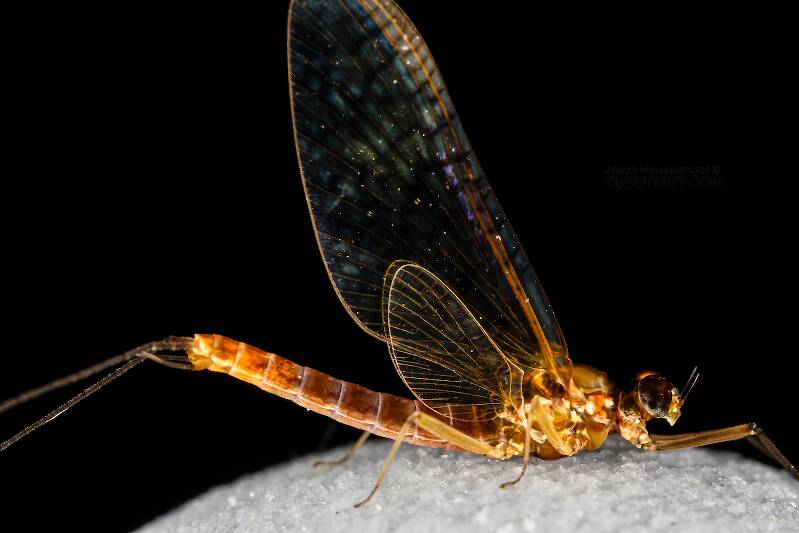
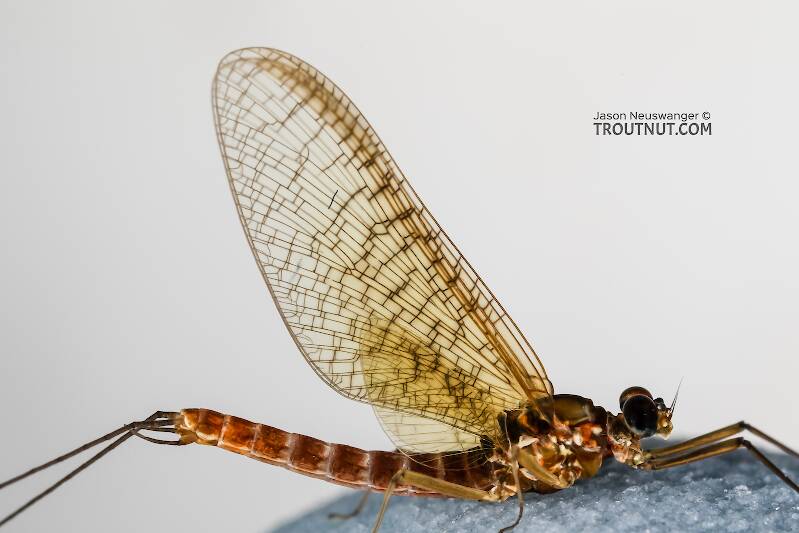
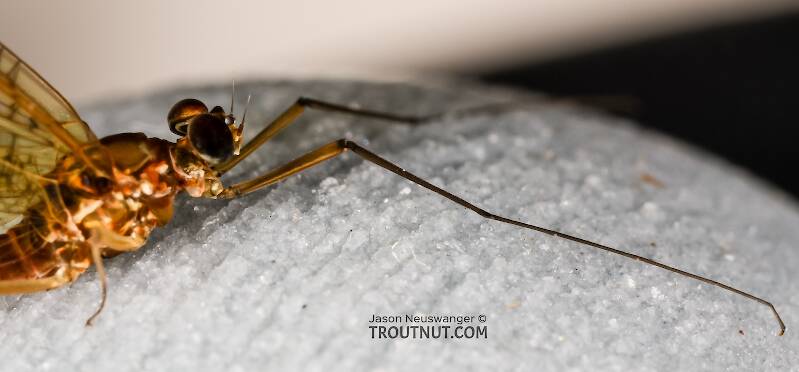
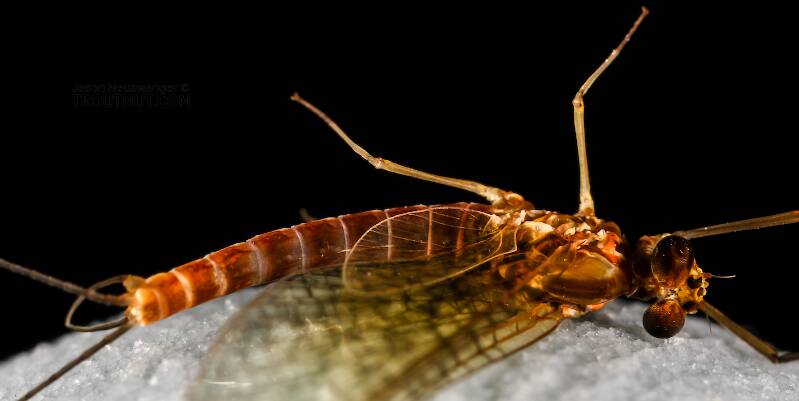
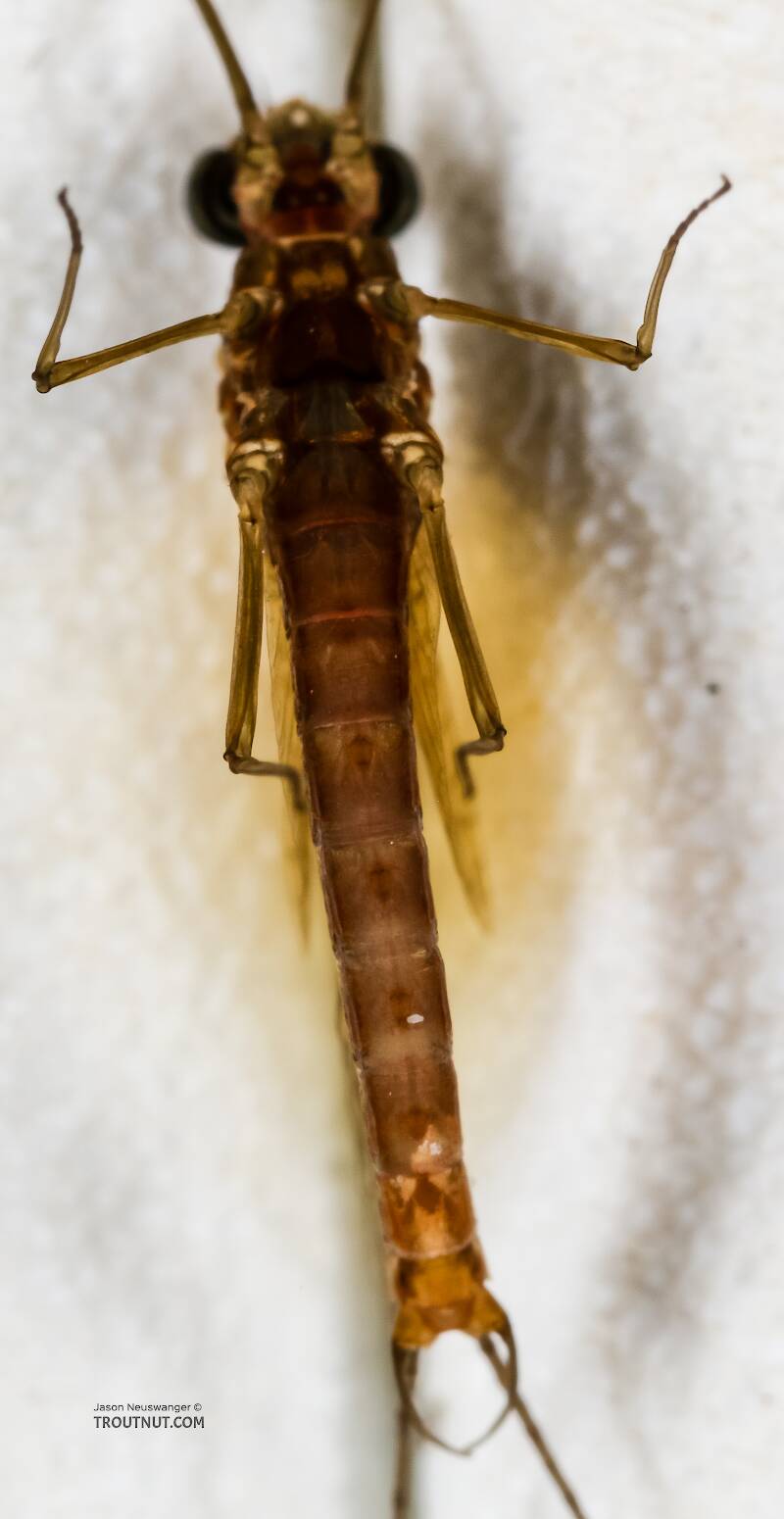
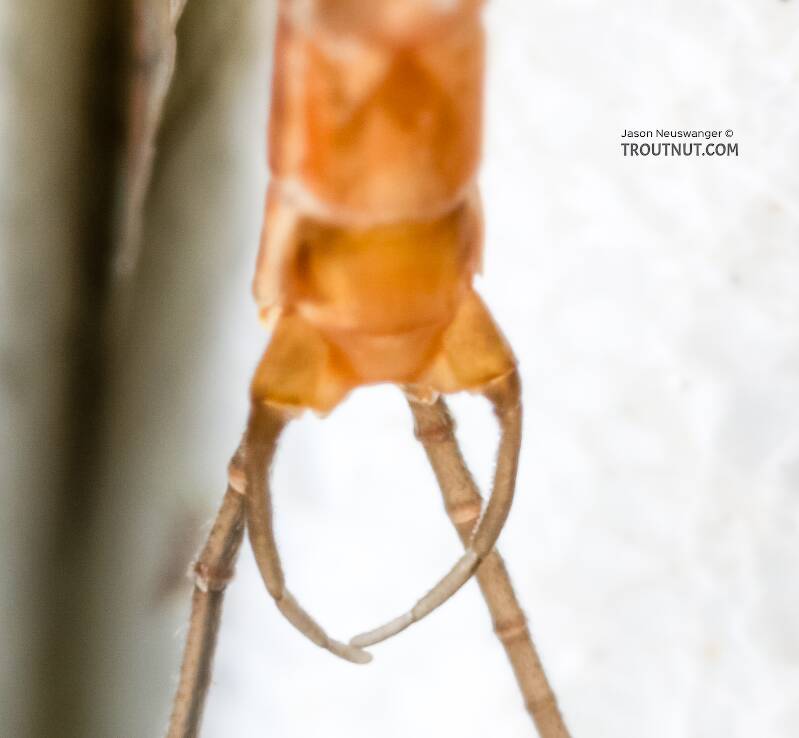
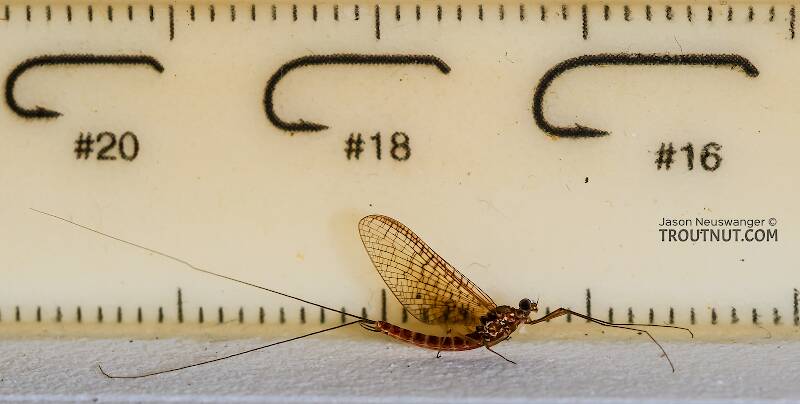
This mayfly was collected from Mystery Creek #237 in Montana on August 1st, 2020 and added to Troutnut.com by Troutnut on August 18th, 2020.
Start a Discussion of Spinner
Male Cinygmula reticulata (Western Ginger Quill) Mayfly Spinner Pictures
Collection details
Date: August 1st, 2020
Added to site: August 18th, 2020
Author: Troutnut

